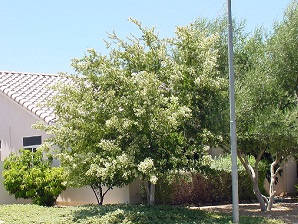Energy Efficient Air Conditioning; Central Air Conditioning
Central A/C, The Core Of Energy Efficient Air Conditioning
According to the “Energy Saver 101 Infographic” on home cooling from Energy Gov, high-efficiency home air conditioning systems, when coupled with other energy saving actions, can reduce your A/C energy consumption by 20 to 50 percent (1). Considering that American homeowners as a group spend over $11 billion per year for home cooling, updating an over-used and under-equipped HVAC system is worth a long, hard look at cost versus energy efficient air conditioning.
Central Air Conditioning – A Brief System Comparison
Modern home cooling systems come in various shapes and sizes that are functional according to four basic styling: 1) Room or Space systems, 2) Ductless Mini-Split units, 3) Evaporative Cooler Systems, and 4) Central A/C Systems. Cost wise pertaining to original investment expenses, window or room systems come in least expensive whereas the ductless Mini-Split system comes in as most expensive. The comparison pricing includes unit cost plus installation costs. The following breakdown views pros, cons, and other aspects of the primary home cooling systems:
— Room Systems – Room units are popular, available as portable or stationary, inexpensive, and have a life span of 10 to 15 years.
— Evaporative Cooler Units – Designed to cool outdoor air by circulating it through evaporated water, “Swamp” coolers come in second lowest in price and include an average installation cost similar to that of standard central air conditioning. Evaporative units work well in arid climates but are suited for areas with high humidity. They also tend to require more frequent maintenance than other types of cooling systems. Average life span is 15-20 years.
— Central Air Conditioning – Using a system of whole-home ducts and registers, a central A/C system provides reliable, energy efficient air conditioning throughout your home. The units are quiet, convenient to operate, and less expensive that a ductless mini-split system. For homes not already equipped with the necessary ductwork, installing central air can be somewhat expensive. However, the central cooling systems typically out perform window units and other types of zone-specific cooling units. Life span averages 15 to 20 years.
— Ductless Mini-Split Units — Designed as wall mounted, ductless zoned air conditioning systems, the Mini-Split A/C device is easy to install yet more considerably more expensive than Central A/C. They function in a ductless environment, thus eliminating the need for installing duct work in homes that lack the basics of central cooling layout. Under the right circumstances, installing a highly efficient ductless system makes good sense. But in a home already equipped for central cooling, you should avoid the extra expense. Life span of a ductless mini-split A/C unit is 12 to 15 years.
Energy Efficient Air Conditioning
Modern central A/C systems consume 20-40 percent less energy than a unit that is over 10 years old. They provide much better energy efficient air conditioning than do room A/C units and they don’t take up internal living space or deteriorate the curb appeal of your Arizona home. With over twenty years in business serving the Arizona community, American Cooling and Heating can help you determine the best system for meeting your home cooling needs.
New residential A/C standards have now been in effect since January of 2006. All modern central air systems are required to provide a minimum of 13-SEER cooling efficiency. But for most homes, going a bit higher is well worth a bit of additional startup expense. The trained and certified HVAC techs at American Cooling and Heating will make sure your get a right-sized unit designed specifically for your home and the existing circumstances. Our installation team will ensure that your Phoenix AC installation:
- Allows sufficient room for indoor maintenance, service and repairs
- Is supported by an adequate duct/register system
- Includes proper sealing of all ducts and registry joints
- A cleared area around the outdoors condensing unit
- Is fully charged with the exact factory-recommended refrigerant
- Meets the industry standards for duct-sizing methodology
- Is properly sized for your home.
Make contact today: For a free estimate on how to reap the best pricing on Central Air Conditioning in Arizona.
1) http://www.energy.gov/articles/energy-saver-101-infographic-home-cooling
